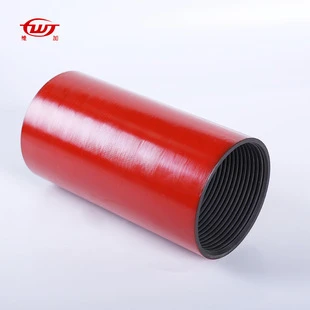- Afrikaans
- Albanian
- Amharic
- Arabic
- Armenian
- Azerbaijani
- Basque
- Belarusian
- Bengali
- Bosnian
- Bulgarian
- Catalan
- Cebuano
- Corsican
- Croatian
- Czech
- Danish
- Dutch
- English
- Esperanto
- Estonian
- Finnish
- French
- Frisian
- Galician
- Georgian
- German
- Greek
- Gujarati
- Haitian Creole
- hausa
- hawaiian
- Hebrew
- Hindi
- Miao
- Hungarian
- Icelandic
- igbo
- Indonesian
- irish
- Italian
- Japanese
- Javanese
- Kannada
- kazakh
- Khmer
- Rwandese
- Korean
- Kurdish
- Kyrgyz
- Lao
- Latin
- Latvian
- Lithuanian
- Luxembourgish
- Macedonian
- Malgashi
- Malay
- Malayalam
- Maltese
- Maori
- Marathi
- Mongolian
- Myanmar
- Nepali
- Norwegian
- Norwegian
- Occitan
- Pashto
- Persian
- Polish
- Portuguese
- Punjabi
- Romanian
- Russian
- Samoan
- Scottish Gaelic
- Serbian
- Sesotho
- Shona
- Sindhi
- Sinhala
- Slovak
- Slovenian
- Somali
- Spanish
- Sundanese
- Swahili
- Swedish
- Tagalog
- Tajik
- Tamil
- Tatar
- Telugu
- Thai
- Turkish
- Turkmen
- Ukrainian
- Urdu
- Uighur
- Uzbek
- Vietnamese
- Welsh
- Bantu
- Yiddish
- Yoruba
- Zulu
Understanding the Key Differences Between Casing and Tubing in Oil and Gas Industry
Understanding the Differences Between Casing and Tubing in Oil and Gas Operations
In oil and gas drilling, the terms casing and tubing refer to two distinct types of pipes used within a wellbore, each serving unique and vital functions. While both play critical roles in the extraction of hydrocarbons, they are designed for different purposes, endure varying pressures, and are subject to different design requirements. This article delves into the essential differences between casing and tubing, elucidating their respective roles within the drilling and extraction processes.
Definition and Purpose
Casing is a series of steel pipes that are installed in the wellbore after drilling has taken place. Its primary purpose is to support the walls of the well, preventing collapse and protecting the wellbore from contamination by groundwater and other formations. Casing also serves as a conduit for the production fluids and offers structural integrity to the well. Additionally, casing isolates different pressure zones and formations, which is crucial for maintaining well control and ensuring safety during drilling and production operations.
On the other hand, tubing is a smaller diameter pipe installed inside the casing, specifically designed to transport the hydrocarbons from the production zone to the surface. Tubing allows for efficient flow of oil and gas, and it is typically removable, enabling operators to perform maintenance or replace it without affecting the casing.
Material and Design
Casing and tubing are constructed from different grades and materials based on their operational requirements. Casing is usually made from high-strength steel to withstand external pressures and environmental conditions, as it must support the geological formations surrounding the wellbore. The thickness of casing pipes varies depending on their depth and the pressures they will encounter.
Conversely, tubing is generally manufactured from lower-grade steel than casing, as it is designed to handle internal pressures rather than external loads. The wall thickness of tubing is optimized for the flow of hydrocarbons and also to meet specific pressure ratings, making it capable of handling the dynamics of production without failure.
what are the differences between casing and tubing?

Installation and Removal
The installation process for casing and tubing also sets them apart. Casing is installed once the well is drilled to the desired depth and is cemented in place to secure it against the wellbore walls. Cementing creates a barrier that helps in isolating different subsurface layers and prevents fluid migration between them.
In contrast, tubing is installed after the casing has been placed and cemented. Tubing can be removed and replaced more easily than casing, allowing for flexible maintenance or enhancements in production techniques, such as the introduction of artificial lift systems. This flexibility is crucial for adapting to changing production conditions without the need for extensive rig operations.
Pressure and Flow Dynamics
Another critical difference lies in the pressure handling of casing and tubing. Casing is designed to withstand high external pressures from the surrounding geological formations, while tubing is engineered to handle internal pressures generated during the flow of hydrocarbons to the surface. Tubing must withstand significant variations in pressure due to changes in production rates, reservoir pressures, and the properties of the fluids being extracted.
The flow dynamics also differ significantly between the two. The larger diameter of casing allows for the initial transport of drilling fluids and cement, but it is the smaller diameter of tubing that enables efficient hydrocarbon production. Optimizing the design of both casing and tubing is crucial for enhancing well performance and ensuring safety in operations.
Conclusion
In summary, while both casing and tubing are essential components of oil and gas wells, they serve different functions, possess varying designs and materials, and have distinct installation and operational characteristics. Understanding these differences is crucial for petroleum engineers and production teams, as it directly impacts well integrity, production efficiency, and safety operations. By appropriately utilizing casing and tubing, operators can optimize oil and gas extraction, ensuring profitable and sustainable energy production. As exploration and extraction technologies advance, the roles of casing and tubing will continue to evolve, further enhancing their significance in the ever-changing landscape of the oil and gas industry.
-
Tubing Pup Joints: Essential Components for Oil and Gas OperationsNewsJul.10,2025
-
Pup Joints: Essential Components for Reliable Drilling OperationsNewsJul.10,2025
-
Pipe Couplings: Connecting Your World EfficientlyNewsJul.10,2025
-
Mastering Oilfield Operations with Quality Tubing and CasingNewsJul.10,2025
-
High-Quality Casing Couplings for Every NeedNewsJul.10,2025
-
Boost Your Drilling Efficiency with Premium Crossover Tools & Seating NipplesNewsJul.10,2025







